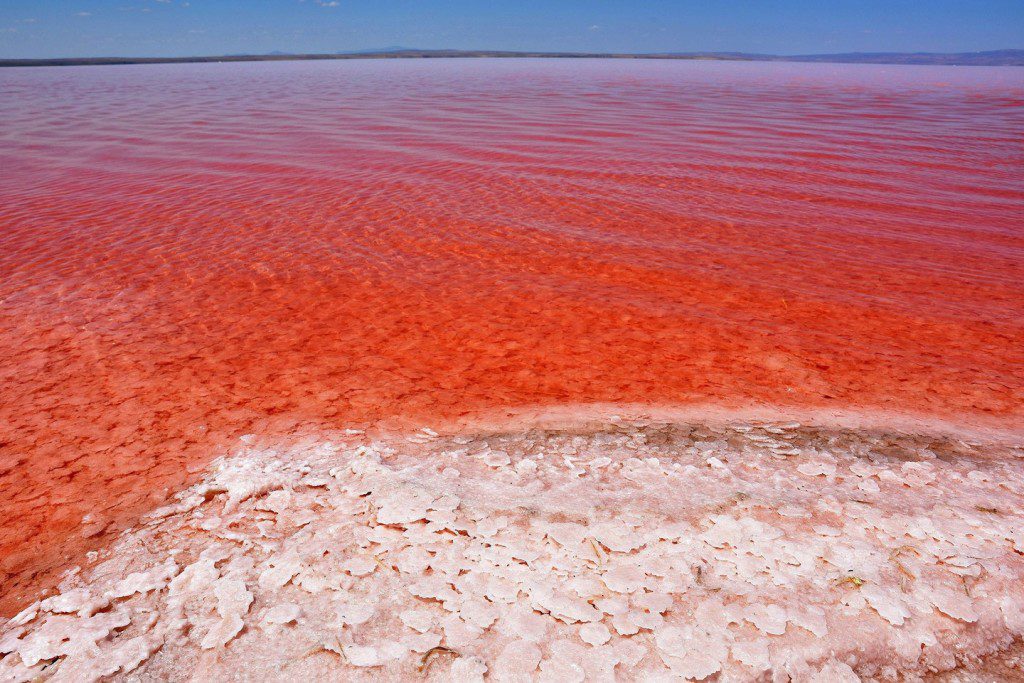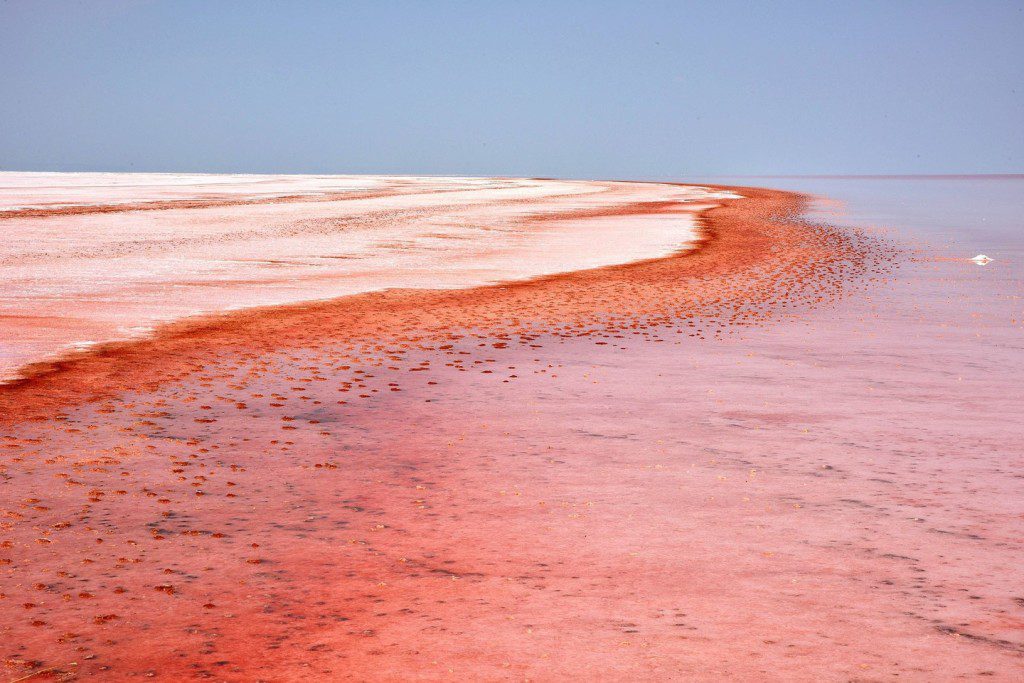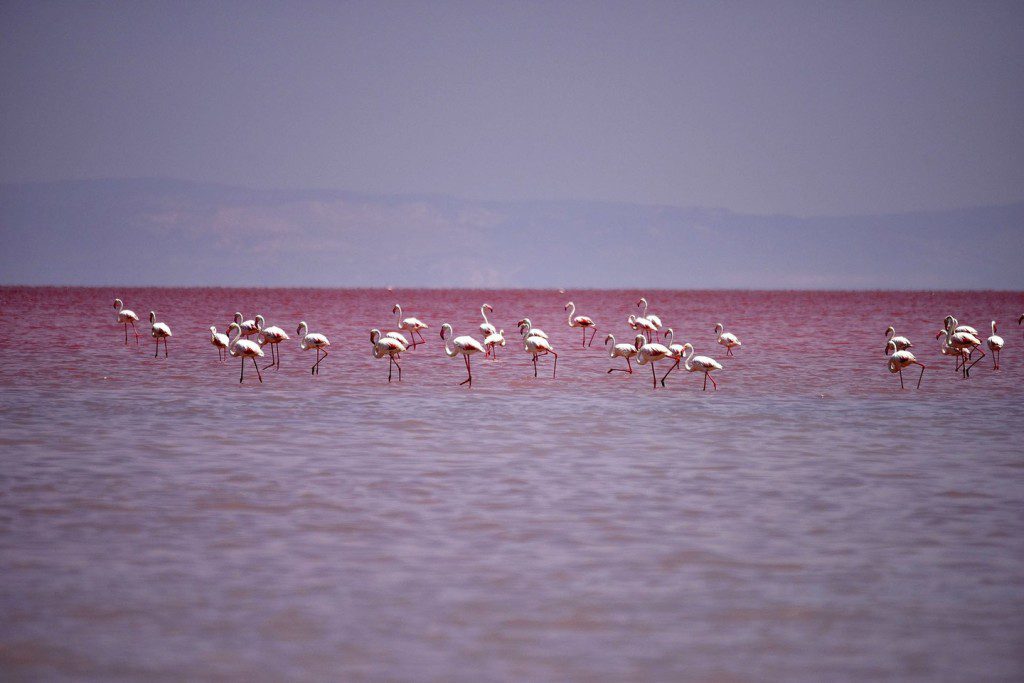You have undoubtedly seen a lot of photos of pink lakes online, but Tuz Golu adds something special to the collection. Tuz Golu, one of the largest salt lakes in the world (Tuz Golu is the 2nd largest lake in Turkey), lies in a tectonic depression in Turkey’s dry central plateau, situated in Aksaray.
The hypersaline lake, is located at an elevation of 900 meters above sea level and has a surface area of about 1,500 square kilometers. It is fed by two main streams, the Kizilirmak, and the Delice, and has no outlet to the sea. The lake’s high salt content, which is about 32%, makes it uninhabitable for most forms of aquatic life, except for some microorganisms and halophyte plants. Therefore, during the scorching and arid summer months, the water in Tuz Golu Lake evaporates, raising the salinity even further. This creates the perfect environment for Dunaliella salina to bloom, reproducing rapidly and turning the lake into a magnificent red sight.
The lake is just like a devil’s swimming pool due to the huge algae flourish, as Rosy Dunaliella Salina algae turn into a pink shade every year. Dunaliella salina not only contributes to the lake’s unique beauty, but it also performs a vital ecological role as a primary producer, which means it is at the bottom of the food chain and feeds other creatures in the lake.
However, you don’t need to worry, because this algae is completely harmless, its colors change not a sign of the apocalypse or an ecological disaster. Tuz Golu Lake stretches across more than 580 square miles and is just three to six meters deep most of the year, making it one of the largest hypersaline lakes in the world.
When the summer season starts, the lake water evaporates due to heat and killing plankton that normally eats the algae. When the summer heat is at its peak, the algae continuously thrives and will perhaps be red until the lake fully evaporates. The water organisms have antioxidant properties and are also highly rich in red beta-carotene, which gives flamingos their pink color.
The Tuz Golu lake recedes and reddens every year, leaving behind cracked salt flats that supply half of Turkey’s salt, and enticing snap-happy tourists. So many photographers went to Turkey just to capture the crimson lake in all its glory.
Therefore, in 2001, Tuz Golu lake was declared a particularly protected area, including all of the lake surface and surrounding waterbeds and a few of the key neighboring steppe areas. The famous Australian Pink lake is widely viral on the internet.
Despite its economic and tourist significance, Tuz Golu faces some environmental challenges. Pollution and overfishing pose a threat to the lake’s sensitive environment, while the lake’s high salt content and fluctuating water levels have caused soil degradation. The Turkish government has taken steps to address these issues, such as implementing conservation and restoration programs, but the lake’s long-term health remains a concern.
Overall, Tuz Golu is a unique natural wonder and an important economic and cultural resource for the region. Its significance to Turkey’s history, economy, and environment makes it a destination worth visiting and preserving for generations to come. The stunning red algae of Tuz Golu Lake’s are a magnificent illustration of how life can adapt and thrive in severe settings; its annual bloom is a captivating natural phenomenon that draws visitors from all over the world.














